Improved aquaculture technology will save the world!- Turning Southeast Asia into a world food storehouse -
Improved aquaculture technology will save the world!
- Turning Southeast Asia into a world food storehouse -
Research Fields and Areas
Bioresources

Seafood is an important source of protein as well as a food source rich in functional compounds such as DHA and taurine. Japan has always been a major consumer of fish, and demand for fisheries products has increased in recent years due to increased health-consciousness in Europe and America, and the economic growth of China. With the global population expected to exceed nine billion in 2050, demand is likely to increase even more. However, fisheries resources are limited. Even now, many fish are already on the brink of extinction due to overfishing. For this reason, the production of fisheries products through aquafarming has become important to the challenge of securing food resources.
There are some obstacles that must be overcome in order to obtain a stable supply of fisheries products using aquafarming. For example, there are the problems of infectious disease and the need to obtain feed. This project aims to develop new aquaculture technology in collaboration with the Kingdom of Thailand. In addition to being an important trading partner to Japan for fishery product imports, Thailand is a leader in Southeast Asia in the science of fisheries. This project aims to establish a range of technologies with the potential to turn Southeast Asia into a new storehouse of food for the world.


Principal investigator (Japan):Dr. OKAMOTO Nobuaki
Research Professor,
Tokyo University of Marine Science and Technology
(Former president of Tokyo University of Marine Science and Technology, 2012-2014.)
He completed his initial graduate studies in aquaculture at the Graduate School of Fisheries of Tokyo University of Fisheries, and received his Ph.D. in fisheries science. He specialized in fish pathophysiology and in fish genetics and physiology.
After serving as assistant, assistant professor, and then professor at Tokyo University of Fisheries, and professor at Tokyo University of Marine Science and Technology, he became president of Tokyo University of Marine Science and Technology in 2012. He was first to successfully identify viral disease-resistant loci. He was also first to succeed with the molecular breeding of fish using DNA markers linked to disease-resistant loci, greatly contributing to the reduction of damage due to viral disease in fish. He has received numerous awards from academic societies, including the Japanese Society of Fish Pathology Award in 2009 and the Japanese Society of Fisheries Science Award in 2014.
 Japan perspective
Japan perspective
Building a world storehouse of food with Japanese technology
Seafood and other fisheries food resources are attracting attention as a means for resolving food shortages as the global population increases. Japan has had a fish-eating culture since ancient times, and today possesses world-leading aquaculture technology. However, there are fears that the aquaculture industry in Southeast Asian nations could decline due to damage caused by infectious diseases at aquafarms and the high cost of production of fisheries products. Now is the time for Japan to pass on aquaculture technology that it has perfected over more than half a century. We want to collaborate with Southeast Asian nations to build a storehouse of food for the worl

Principal investigator (Thailand): Dr. Kom Silapajarn
Director, Coastal Aquaculture R&D
Department of Fisheries
Ministry of Agriculture and Cooperatives
After getting his bachelor's and master's degrees from Kasetsart University in Thailand, he obtained his master's degree and Ph.D. from Auburn University in Alabama, U.S.A.
After returning to Thailand, he served as director of the Coastal Aquatic Animal Health Research Institute, Songkhla and director of Planning and Development, Department of Fisheries, Ministry of Agriculture and Cooperatives before assuming his current position in 2014.
 Thailand perspective
Thailand perspective
Aiming to improve aquafarming in the fisheries industry through diverse research activities
In order to deal with rapidly growing populations, this project is conducting a broad range of research so as to produce and secure a supply of aquafarming fishery products, which are an important food resource. Areas under study include the creation of superior strains, development of breeding technology (surrogate technology), diagnosis and prevention of infectious diseases, and development of vaccines, alternate feedstuffs, and technology for detecting hazard factors. Some of the important outcomes from this project include the building of a cooperative system by fishery authorities and universities in Thailand, and young researchers in Thailand being given opportunities to train with Japanese experts and at Japanese institutes.
Project summary
Creating superior strains
 We are creating superior strains that grow rapidly and are also robust and resistant to disease and changes in environment. In particular, we aim to make improvements in aquafarming to facilitate the farming of fish with high commercial value, and achieve stable profits. In order to develop superior strains in a short time, this project breeds fish by leveraging genetic / genome findings.
We are creating superior strains that grow rapidly and are also robust and resistant to disease and changes in environment. In particular, we aim to make improvements in aquafarming to facilitate the farming of fish with high commercial value, and achieve stable profits. In order to develop superior strains in a short time, this project breeds fish by leveraging genetic / genome findings.
Utilizing surrogate technology
Utilizing surrogate technologyIn surrogate technology, one strain of fish is used to bear another strain's offspring. Surrogate technology can be used to have small fish bear the offspring of large fish. If the parent fish are small, they are more efficient, because they can be maintained using less space and feed. Also, the time before the fish reach maturity can be shortened using small fish--because large fish take longer to mature and bear young--so there are also advantages in terms of breeding.
Preventing infectious diseases
 Like people, fish are treated with medicine when they come down with an infectious disease, and they are sometimes also inoculated with vaccines. Technology for analyzing the immunity of fish is required in order to take appropriate measures against disease. Therefore, this project is developing methods for analyzing fish immunity and their bodies' defense responses at the genetic level. We are also conducting research on pathogenic microorganisms in order to develop effective vaccines.
Like people, fish are treated with medicine when they come down with an infectious disease, and they are sometimes also inoculated with vaccines. Technology for analyzing the immunity of fish is required in order to take appropriate measures against disease. Therefore, this project is developing methods for analyzing fish immunity and their bodies' defense responses at the genetic level. We are also conducting research on pathogenic microorganisms in order to develop effective vaccines.
Developing new feed
 Fishmeal is used as feed for aquacultured fish. Currently, 4-5 kg of fishmeal is required to produce 1 kg of aquacultured fish, which constitutes a deficit in terms of animal protein. Project researchers have been feeding soy beans, corn, and poultry by-product* to aquacultured fish and observing their growth with the aim of developing an alternative feed to fishmeal.* Poultry by-product: The leftovers from poultry meat processing.
Fishmeal is used as feed for aquacultured fish. Currently, 4-5 kg of fishmeal is required to produce 1 kg of aquacultured fish, which constitutes a deficit in terms of animal protein. Project researchers have been feeding soy beans, corn, and poultry by-product* to aquacultured fish and observing their growth with the aim of developing an alternative feed to fishmeal.* Poultry by-product: The leftovers from poultry meat processing.
Detecting polution from chemical substances and shellfish poison
In order for aquacultured fish to be a safe source of food, it is necessary to confirm that there is no pollution by dangerous substances. Project researchers are studying inexpensive methods of checking for the existence of pollutants, targeting malachite green* and shellfish poison.* Malachite green: A chemical used as a dye and disinfectant that is carcinogenic.
High-value fish aquafarming will be established as a new industry in Thailand. We aim to also apply project outcomes to neighboring countries, and turn Southeast Asia into a huge hub that supplies the world with food from its fisheries industry. The success of aquafarming can also take the stress off fish in the wild, protecting and conserving natural resources.


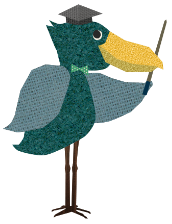
 Dr. OKAMOTO
Dr. OKAMOTO
The oldest recorded mention of aquafarming is considered to be Chinese records about the aquafarming of carp from the 11th century B.C. Carp aquafarming is thought to date back to the 17th century in Japan and to 1947 in Thailand. The first saltwater fish to have been farmed is reputed to be young yellowtail, which was farmed in 1927 in Kagawa Prefecture, Japan. In Thailand, work began on farming sea bass in 1973.
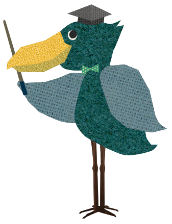
 Dr. OKAMOTO
Dr. OKAMOTO
 Rearing density differs depending on the type and size of the fish being farmed and also on the water temperature and other aspects of the aquafarming environment. For example, when aquafarming yellowtail, which accounts for nearly half of aquafarming production in Japan, 1 cubic meter per 7 kg is said to be the proper rearing density. In order to make the aquafarming industry sustainable, it is important to adhere to proper rearing densities and prevent water pollution due to aquafarming.
Rearing density differs depending on the type and size of the fish being farmed and also on the water temperature and other aspects of the aquafarming environment. For example, when aquafarming yellowtail, which accounts for nearly half of aquafarming production in Japan, 1 cubic meter per 7 kg is said to be the proper rearing density. In order to make the aquafarming industry sustainable, it is important to adhere to proper rearing densities and prevent water pollution due to aquafarming.

 Dr. OKAMOTO
Dr. OKAMOTO

 In Japan, it is common to aquafarm saltwater fish inside fish pens suspended in the water off the coast. However, in Thailand, fishermen build fish pens in rivers and other waterways that connect to the ocean. When storms come, however, the pens sometimes get washed away, or fish die due to environmental changes caused by the storm. In order to curb this kind of damage, submersible cages* are being developed and there is research into land-based aquaculture technology.
In Japan, it is common to aquafarm saltwater fish inside fish pens suspended in the water off the coast. However, in Thailand, fishermen build fish pens in rivers and other waterways that connect to the ocean. When storms come, however, the pens sometimes get washed away, or fish die due to environmental changes caused by the storm. In order to curb this kind of damage, submersible cages* are being developed and there is research into land-based aquaculture technology.
* Submersible cage: A fish pen that can both float and be submersed in the ocean. Submersing the cage reduces exposure to storms, protecting the fish.

 Dr. OKAMOTO
Dr. OKAMOTO
Because aquacultured fish don't need to roam around to find their feed like wild fish do, they inevitably become physically inactive and develop a higher fat content and softer meat than wild fish. The flavor of aquacultured fish in the past used be considered poor, but today, thanks to rearing methods that are much more advanced than before, some report that it is even tastier than wild fish.

 Dr. OKAMOTO
Dr. OKAMOTO
In addition to injections, there are also methods that mix the vaccine with feed or submerge fish in a vaccine solution. Currently, injection is the prevalent method because it uses only a small amount of vaccine and makes it possible to deliver a fixed amount with certainty. Injection is a labor-intensive task, because it requires the vaccine to be injected into each individual aquacultured fish. This burden can be reduced by developing and using a device to perform a number of injections in succession.

 Dr. OKAMOTO
Dr. OKAMOTO
The main ingredients in fishmeal are anchovy, horse mackerel, and mackerel. Actually, aquafarming requires far less feed compared to raising farm animals like cattle and pigs. The aquafarming industry has grown rapidly since the 1980s, so there are hopes that it will provide an answer to food problems in the future. We feel certain that the outcomes of our project will contribute to solutions for food problems.

 Dr. OKAMOTO
Dr. OKAMOTO
 In general, sea bass and tilapia are often eaten in Thailand. I like catfish and grouper. Because these fish are cooked in a variety of ways, including fried in oil, boiled in soups, and steamed, they are served in a broad range of cuisine, from normal household cooking to banquets at special occasions.
In general, sea bass and tilapia are often eaten in Thailand. I like catfish and grouper. Because these fish are cooked in a variety of ways, including fried in oil, boiled in soups, and steamed, they are served in a broad range of cuisine, from normal household cooking to banquets at special occasions.
Pla nin (tilapia)--A bond between Thailand and Japan

Tilapia (pla nin in Thai) is a delicious freshwater fish popular in Thailand that originally inhabited the Nile River. It is thanks to Japan's Crown Prince Akihito, an ichthyologist and now the Emperor of Japan, that this fish made it to Thailand. At a time when the Thai people suffered from a lack of animal protein, His Imperial Highness gave tilapia to His Majesty the King of Thailand. The King reared and studied tilapia in his palace, and was successful in breeding them. Later on, the Fisheries Department reared them through aquafarming. Due to its outward appearance being characterized by black horizontal stripes, brown fins, and white spots, it was named pla nin, incorporating the meaning "black" in Pali/Sanskrit.
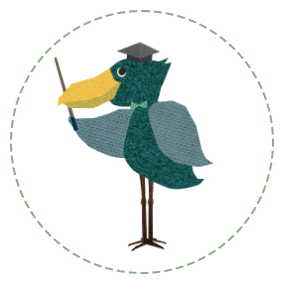
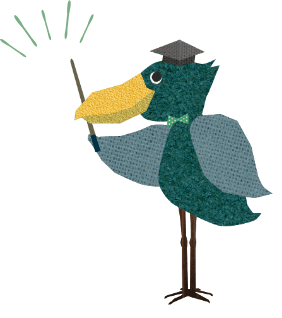
Bioresources
 Kingdom of Thailand
Kingdom of Thailand
Case Studies
Contact Us
Japan Science and Technology Agency (JST)
Department of International Affairs
SATREPS Group
TEL : +81-3-5214-8085
Related articles
-
Bioresources
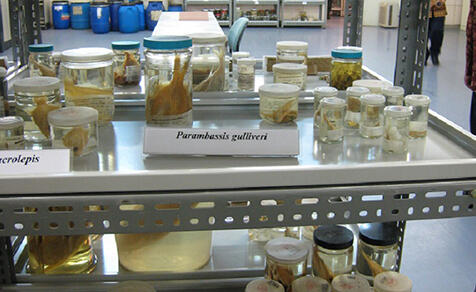
 Republic of Indonesia
Republic of Indonesia
World-class Microbial Resource Center
- Re-evaluating and developing bioresources in Indonesia - -
Environment / Energy
(Carbon Neutrality)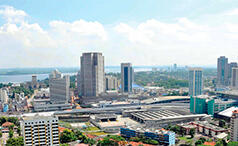
 Malaysia
Malaysia
For a future in which people can live with peace of mind
- Developing scenarios for creating low-carbon societies - -
Disaster Prevention and Mitigation
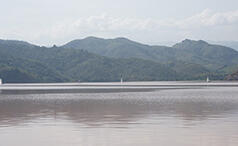
 Republic of Cameroon
Republic of Cameroon
Investigating the silent seeds of disaster in two lakes
- Saving lives from disasters caused by CO2 - -
Infectious Diseases Control
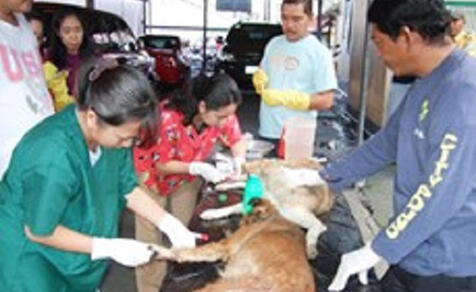
 Republic of the Philippines
Republic of the Philippines
Saving humanity from leptospirosis
- Battling infectious disease with vaccines and diagnostic technology -

















